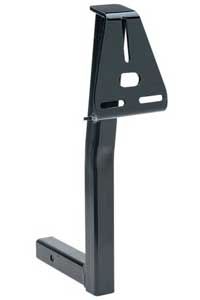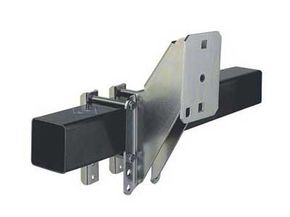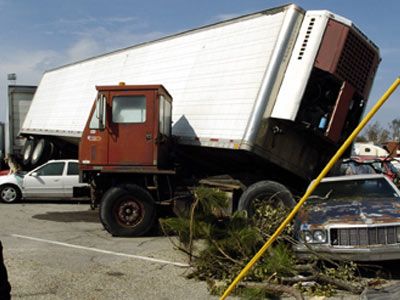That spare tire mount isn't going to install itself. If you find the task too intimidating, you can always pay a professional to install it at a garage. Otherwise, until scientists create a robot tire mount that will do the work for you, you're going to have to bust out a few tools.
The exact nature of the required installation depends on the type of spare tire mount you picked out. This means installation might be as simple as tightening a few bolts. On the other hand, you might have to figure out from whom you can borrow a welding torch. Let's look at a few varieties of spare tire mounts and what all's involved in sticking it on.
Trailer hitch mounts: As the name implies, these spare tire mounts connect to trailer hitches. Simply remove the drawbar or hitch cover and slide the mount's end into the receiver tube. Then, all you have to do is lock it in place with a hitch pin or hitch lock. Just make sure the mount fits your hitch size. If the pieces rattle too much, you can also install a hitch stabilizer to smooth things out.
Bumper mounts: If your truck or trailer has a bumper, you may have another mounting option for your spare tire mount. Bumper mounts attach to the bumper with U-bolts, which are long, two-headed bolts bent into a "U" shape. These special bolts go around the bumper and screw into the spare tire mount, locking it firmly in place.
Tongue and frame mounts: Some trailers, such as those used to haul boats, are essentially metal frameworks. Technically, you can latch a spare tire mount to any portion of the frame, so long as it doesn't interfere with the payload or the towing vehicle. Various spare tire mounts are made to work under these conditions. Once you've found a suitable location on the trailer, these spare tire mounts are easy to install. The mount attaches to one side of a trailer beam and a pair of long, narrow pieces goes on the other. Screw four bolts into place, and the trailer beam is sandwiched firmly between the two pieces. In addition, some models attach with U-bolts.
Horse trailer mounts: Horse and livestock trailers often boast a rather simple spare tire mount design. Horse trailer mounts consist of a single, rectangular piece of metal with its ends bent down to form two legs. Installation typically calls for these legs to be welded to the trailer, usually atop the raised gooseneck between the trailer and the hitch.
Truck bed mounts: Granted, you can always just throw a spare tire into the back of the truck unsecured, but this doesn't really help you protect against theft or possible damage. Several different spare tire mount designs actually attach to portions of the truck bed. Some lock into the side, near the wheel well, to save room. Others bolt to the center of the bed on an angled metal tripod or even allow you to mount the spare under the bed. It all comes down to what you plan to use your truck for.
If none of these designs fills your requirements, don't despair. You can find spare tire mounts designed to fit specific needs, such as those made for RVs or Jeeps. A number of mounts are designed to attach to roof racks. If you've thought about sticking a spare tire mount to your vehicle, some enterprising individual probably has as well.
Want to make sure you have all the parts you'll need? Read about spare tire mount kits on the next page.






